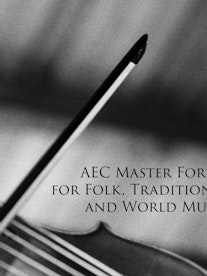Field of study: Performance Practice
Laura Ellestad: Performing Norwegian American

How did Norwegian-American traditional fiddle players adapt their performance practices to cultural contexts in their new homeland?
Summary
This comparative study examines the music culture of the Norwegian-American communities in five states of the American Upper Midwest (Iowa, Minnesota, North Dakota, South Dakota, and Wisconsin) between 1900 and 1970, investigating the shifting ways in which performances of the two music genres of bygdedans and Norwegian-American old-time music functioned to construct heterogeneous Norwegian-American identities during a period of major social, cultural, technological, political, and economic change in the United States. Through case studies of two historical performers, Dagny Andrea Veum Quisling and Daniel Aakhus, the study examines a selection of performance contexts for each genre, analyzing the musical expression of diverse layers of identity through these contexts. The study also investigates how a combination of global and local flows and forces contributed to processes of musical change and exchange in the Norwegian-American music culture, and furthermore, how these processes reflect diverse processes of identity construction.
This qualitative, interdisciplinary study draws on theory and methodology from a range of humanities and social science disciplines, including ethnomusicology, anthropology, sociology, migration studies, cultural studies, performance studies, folklore studies, and media studies. The approach towards the study of the musical performance of Norwegian-American identity is grounded on an interdisciplinary theoretical framework centred on concepts of social identity (particularly ethnic and diasporic identity), performance, and globalization theories as connected to ethnomusicologist Mark Slobin’s framework for the study of subcultural musics (Slobin, 1993). The strategy of inquiry combines historical research and case study research. Data collection was accomplished through archival research, qualitative interviews, fieldwork, and the collection of qualitative documents, audiovisual materials, and artifacts. Data management and analysis involved the use of a relational database, spreadsheets, and computer-assisted data analysis software. As a supplemental tool, Ellestad has also learned and performed music from the repertoires of several historical performers investigated in this study.
Through analyses of multiple examples of musical interplay drawn from the collected data, the study found that Norwegian-American musicians interacted with global and local cultural flows and forces through three broad processes of interplay: intersubcultural interaction; the use of supercultural materials; and interplay via the diasporic interculture. Further, these processes of interplay were found to reflect two main dynamics of Norwegian-American identity construction: plasticity, permeability, and ethnic boundary negotiation; and positioning and mythmaking processes. Through case studies of performers Dagny Andrea Veum Quisling and Daniel Aakhus, performance contexts were found to have served important functions related to identity construction, including the reconstruction of idealized notions of Norwegian national and regional culture; the display of compatibility between ethnic cultural practices and American ideals; and the affirmation of loyalty to Norwegian homeland cultural traditions. The investigation has also shown that performances functioned as outlets, or frameworks, for the reflexive regulation of emotions and self-worth, and as intermediaries for immigrants facing complex issues of adaptation to American society.
The dissertation
Title: Performing Norwegian American. The construction of identity through performances of bygdedans and Norwegian-American old-time music in the Upper Midwest, 1900–1970.
The dissertation is a monograph, and it is written in English.

Articles relevant
Published: Sep 2, 2014 — Last updated: Dec 11, 2025



